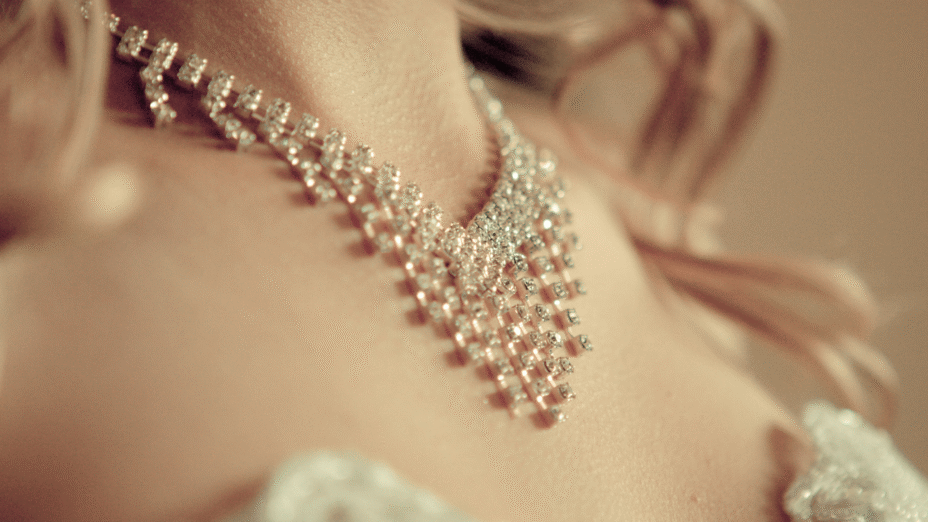Beyond the Sparkle: Exploring the History, Craft, and Enduring Appeal of Jewelry
Jewelry. The word conjures images of glittering diamonds, intricate gold filigree, and the timeless elegance of pearls. But jewelry is far more than mere adornment. It’s a reflection of history, a testament to craftsmanship, a symbol of status, and a powerful form of personal expression. From ancient amulets to modern statement pieces, jewelry has captivated humanity for millennia, evolving alongside culture, technology, and artistic trends. This exploration delves into the rich history, intricate craftsmanship, diverse materials, and enduring appeal of jewelry.

A History Etched in Metal and Stone:
The story of jewelry begins in the Paleolithic era, with early humans adorning themselves with shells, bones, and teeth – likely for symbolic or ritualistic purposes. These weren’t simply decorative; they may have represented status, tribal affiliation, or spiritual protection. As civilizations developed, so did jewelry. Ancient Egyptians revered gold and lapis lazuli, crafting elaborate necklaces, bracelets, and amulets for both the living and the deceased. The intricate goldwork of the Mycenaean civilization and the vibrant gemstone mosaics of the Roman Empire further demonstrate the evolving sophistication of jewelry making.
The Middle Ages saw jewelry intertwined with religious symbolism and heraldry. Elaborate brooches, rings, and pendants often featured religious motifs or family crests. The Renaissance brought a renewed appreciation for classical art and design, influencing jewelry with its focus on intricate detail and naturalistic forms. The Victorian era, with its romanticism and mourning traditions, spurred the popularity of sentimental jewelry, often incorporating hair, locks of fabric, or miniature portraits. The Art Nouveau and Art Deco movements of the early 20th century brought distinct aesthetic shifts, embracing flowing lines and geometric patterns respectively.
The Art of Craftsmanship: From Goldsmith to Gemsetter
Creating jewelry is a complex and skilled process, requiring a blend of artistic vision and technical expertise. Traditionally, jewelry making involved a hierarchy of specialized roles. The goldsmith, a master craftsman, would shape and manipulate the metal – gold, silver, or platinum – using techniques like forging, casting, and soldering. The enameller would apply vibrant colors to metal surfaces using fused glass. The gem setter, a highly skilled artisan, would meticulously secure gemstones into settings, ensuring their stability and brilliance.

Modern jewelry making often combines traditional techniques with advanced technologies. Computer-aided design (CAD) allows designers to create intricate 3D models, which can then be translated into physical pieces using 3D printing or precision milling. Laser cutting and welding offer unparalleled accuracy and efficiency. However, the human touch remains essential, particularly in the setting of gemstones and the finishing of intricate details.
A Kaleidoscope of Materials: Precious, Semi-Precious, and Beyond
The beauty and value of jewelry are inextricably linked to the materials used. Precious metals – gold, silver, and platinum – form the foundation of countless pieces, prized for their durability, luster, and malleability. Gold, in its various karats (purity levels), remains a symbol of luxury and status. Silver, more affordable yet equally versatile, is often used in contemporary designs. Platinum, known for its strength and hypoallergenic properties, is a popular choice for engagement rings and high-end jewelry.
Gemstones, both precious and semi-precious, add color, sparkle, and character. Diamonds, renowned for their brilliance and hardness, are the most coveted gemstones. Colored gemstones – rubies, sapphires, emeralds, amethysts, and many more – offer a spectrum of hues and unique properties. Pearls, organic gemstones formed within oysters, are prized for their luster and elegance.
Beyond traditional materials, contemporary jewelry designers are experimenting with a wider range of substances, including stainless steel, titanium, resin, wood, leather, and even recycled materials, pushing the boundaries of design and sustainability.
The Enduring Appeal: More Than Just Decoration

The enduring appeal of jewelry stems from its multifaceted nature. It’s a form of self-expression, allowing individuals to showcase their personality, style, and values. Jewelry can be a powerful symbol of status, wealth, and achievement. It marks significant milestones – engagements, weddings, birthdays – and serves as cherished heirlooms passed down through generations.
Furthermore, jewelry possesses a unique emotional resonance. A piece of jewelry can evoke memories, represent a connection to loved ones, or serve as a source of comfort and inspiration. The act of wearing jewelry can boost confidence, enhance appearance, and simply bring joy.
Looking Ahead: Innovation and Sustainability
The jewelry industry is constantly evolving, driven by technological advancements and changing consumer preferences. Lab-grown diamonds are gaining traction as a more ethical and sustainable alternative to mined diamonds. Personalized jewelry, incorporating engravings, initials, or custom designs, remains a popular trend. Sustainability is becoming increasingly important, with consumers demanding ethically sourced materials and environmentally responsible production practices. We can expect to see continued innovation in materials, design, and manufacturing processes, ensuring that the sparkling world of jewelry continues to captivate and inspire for generations to come.
